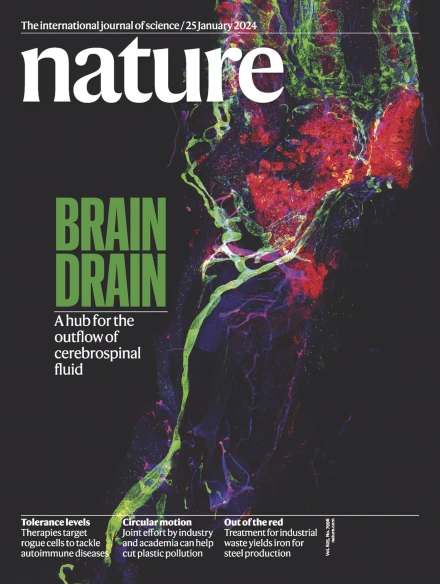Exploring pathways for world development within planetary boundaries
IF 48.5
1区 综合性期刊
Q1 MULTIDISCIPLINARY SCIENCES
引用次数: 0
Abstract
The pressures humanity has been placing on the environment have put Earth’s stability at risk. The planetary boundaries framework serves as a method to define a ‘safe operating space for humanity’1,2 and has so far been applied mostly to highlight the currently prevailing unsustainable environmental conditions. The ability to evaluate trends over time, however, can help us explore the consequences of alternative policy decisions and identify pathways for living within planetary boundaries3. Here we use the Integrated Model to Assess the Global Environment4 to project control variables for eight out of nine planetary boundaries under alternative scenarios to 2050, both with and without strong environmental policy measures. The results show that, with current trends and policies, the situation is projected to worsen to 2050 for all planetary boundaries, except for ozone depletion. Targeted interventions, such as implementing the Paris climate agreement, a shift to a healthier diet, improved food, and water- and nutrient-use efficiency, can effectively reduce the degree of transgression of the planetary boundaries, steering humanity towards a more sustainable trajectory (that is, if they can be implemented based on social and institutional feasibility considerations). However, even in this scenario, several planetary boundaries, including climate change, biogeochemical flows and biodiversity, will remain transgressed in 2050, partly as result of inertia. This means that more-effective policy measures will be needed to ensure we are living well within the planetary boundaries. Current trends imply that we will transgress most of the planetary boundaries by 2050; however, ambitious, urgent and universal action to ameliorate climate change and increase resource efficiency can effectively reduce the degree of transgression.


在地球范围内探索世界发展的途径
人类给环境造成的压力已经使地球的稳定处于危险之中。行星边界框架是确定“人类安全操作空间”的一种方法1,2,迄今为止,主要用于强调目前普遍存在的不可持续的环境条件。然而,评估长期趋势的能力可以帮助我们探索不同政策决定的后果,并确定在地球边界内生活的途径。在此,我们使用“全球环境评估综合模型”(Integrated Model to assessment Global environmental)预测了到2050年的不同情景下9个地球边界中的8个的控制变量,无论是否采取强有力的环境政策措施。结果表明,按照目前的趋势和政策,预计到2050年,除臭氧消耗外,所有地球边界的情况都将恶化。有针对性的干预措施,如执行《巴黎气候协定》、转向更健康的饮食、改善食物质量以及提高水和营养的利用效率,可以有效地降低对地球边界的侵犯程度,引导人类走向更可持续的轨道(也就是说,如果这些干预措施能够基于社会和体制可行性考虑加以实施)。然而,即使在这种情况下,包括气候变化、生物地球化学流动和生物多样性在内的几个地球边界仍将在2050年被突破,部分原因是惯性。这意味着需要更有效的政策措施,以确保我们在地球边界内生活得很好。
本文章由计算机程序翻译,如有差异,请以英文原文为准。
求助全文
约1分钟内获得全文
求助全文
来源期刊

Nature
综合性期刊-综合性期刊
CiteScore
90.00
自引率
1.20%
发文量
3652
审稿时长
3 months
期刊介绍:
Nature is a prestigious international journal that publishes peer-reviewed research in various scientific and technological fields. The selection of articles is based on criteria such as originality, importance, interdisciplinary relevance, timeliness, accessibility, elegance, and surprising conclusions. In addition to showcasing significant scientific advances, Nature delivers rapid, authoritative, insightful news, and interpretation of current and upcoming trends impacting science, scientists, and the broader public. The journal serves a dual purpose: firstly, to promptly share noteworthy scientific advances and foster discussions among scientists, and secondly, to ensure the swift dissemination of scientific results globally, emphasizing their significance for knowledge, culture, and daily life.
 求助内容:
求助内容: 应助结果提醒方式:
应助结果提醒方式:


